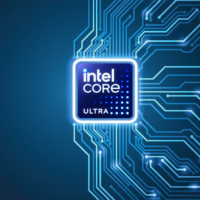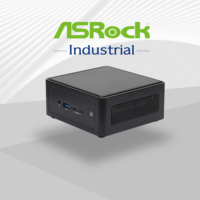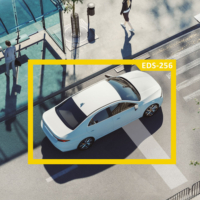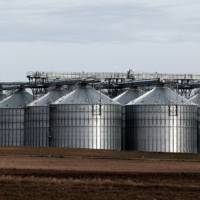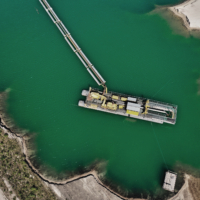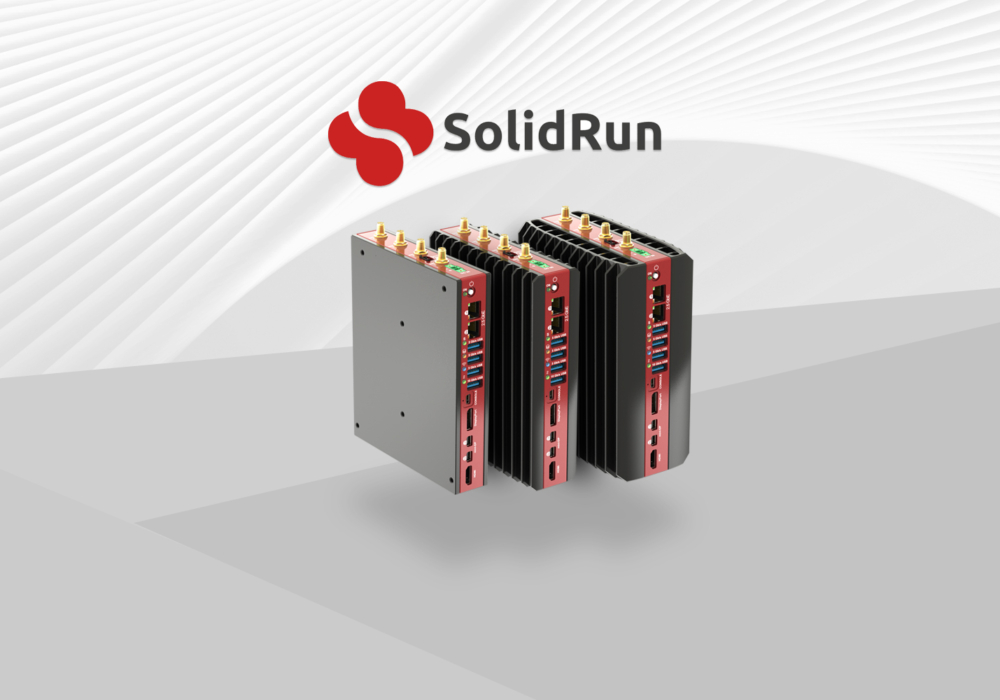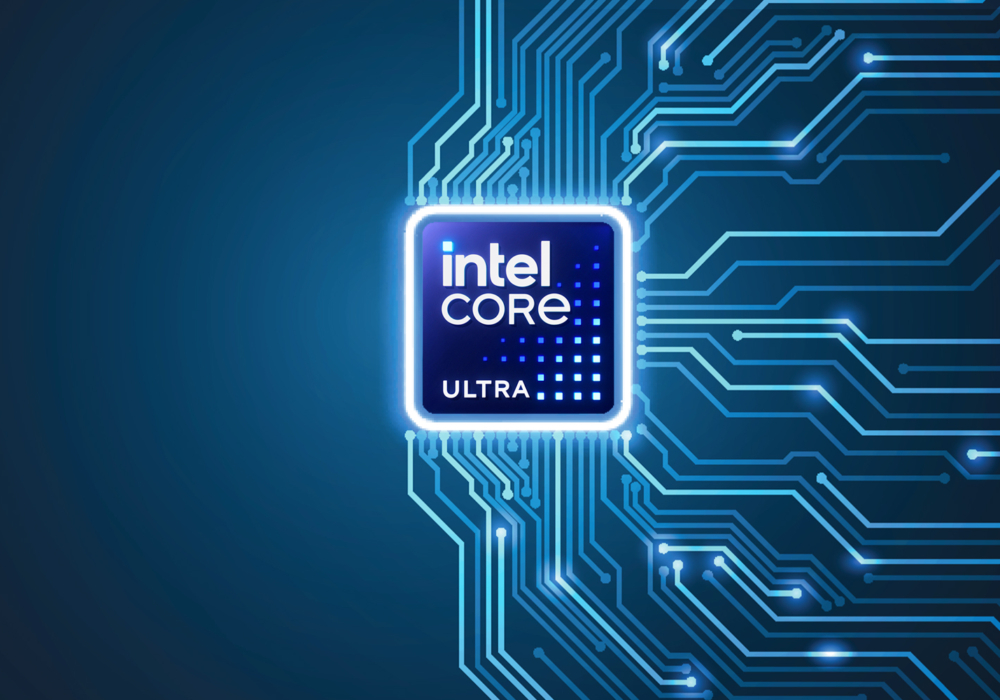In this article:
- What Sets Intelligent Video Analytics Apart?
- Key Capabilities and Use Cases
- Applications of Intelligent Video Analytics
- Considerations for Implementation
- Edge Computing vs. Cloud Deployment
- Data Management and Integration
- Summary
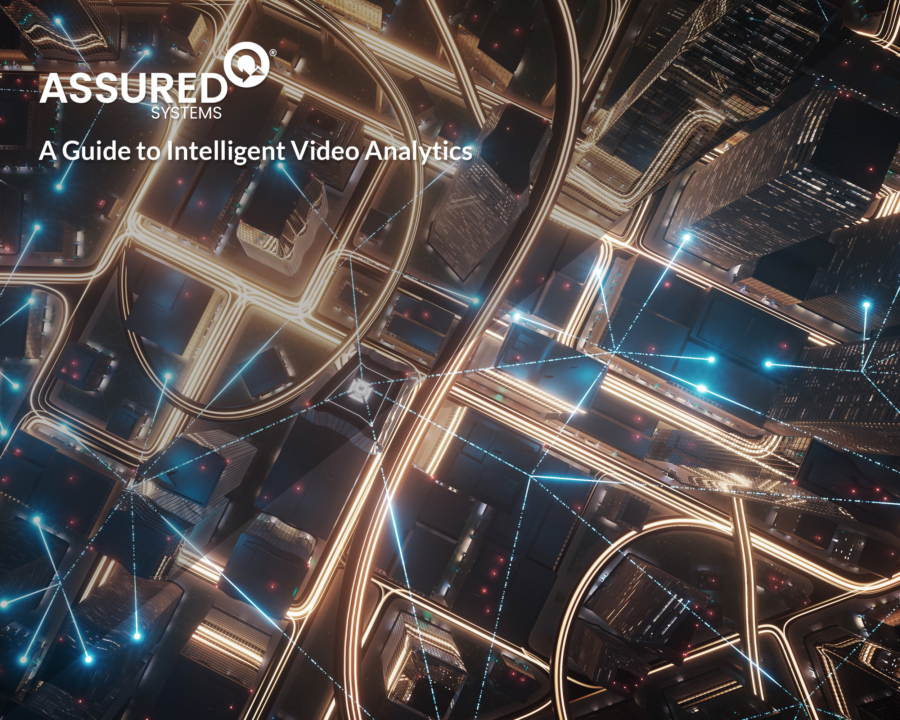
Experience the dawn of a transformative technological era poised to revolutionise industries ranging from retail to healthcare: Intelligent Video Analytics (IVA). This cutting-edge technology seamlessly integrates artificial intelligence, machine learning, and computer vision services, going beyond mere video recording to comprehend and analyse data in real time.
Unlock a myriad of opportunities for businesses to elevate operational efficiency, optimise return on investment, and bolster safety measures. With its applications spanning diverse sectors like manufacturing, retail, security, transportation, and healthcare, IVA holds the potential to revolutionise operations and yield substantial benefits.
What Sets Intelligent Video Analytics Apart?
Intelligent Video Analytics harnesses the power of computer vision and artificial intelligence (AI) to scrutinise video footage, generating actionable insights. Utilising deep-learning neural networks, it identifies and comprehends objects, individuals, and activities either in real-time or during playback.
By deploying algorithms and machine learning, video analytics and AI efficiently manage and interpret extensive video data from surveillance systems. This analysis not only identifies humans, vehicles, objects, and events but also generates descriptive metadata, laying the groundwork for diverse responses such as safety notifications or triggering recordings. Embrace the future of video analytics with IVA, a game-changer in shaping the landscape of intelligent technology.
Key Capabilities and Use Cases
Object Recognition:
Object recognition stands as a crucial task in computer vision, adept at identifying and categorising objects within digital imagery. Moving beyond mere object detection, it delves into classifying specific types or categories to provide answers to the question, “What object is depicted in this image segment?” This capability proves valuable in scenarios such as distinguishing between various products on a conveyor belt or identifying different types of flaws with precision.
Object Detection:
An essential computer vision task, object detection plays a vital role in identifying instances of visual objects within digital images, whether in photos or video frames. It serves as the foundational information for computer vision applications, addressing the question, “What objects are where?” Object detection finds applications in identifying humans, animals, cars, buildings, and more, offering insights into the spatial distribution of objects in a given visual context.
Object Tracking:
Object tracking emerges as a powerful tool for locating and monitoring moving objects within video streams. Employing diverse models and techniques, this process ensures a high degree of accuracy and efficiency. In practical terms, object-tracking algorithms contribute to enhancing safety and efficiency in video surveillance systems for production lines. Retailers leverage these techniques to detect theft or suspicious activities, while in manufacturing, computer vision monitors employee safety and performance, issuing alerts for potential collisions or unauthorised access to hazardous areas.
Embrace the capabilities of object recognition, object detection, and object tracking as integral components reshaping the landscape of computer vision technologies. From precision in categorisation to spatial awareness and real-time monitoring, these functionalities redefine how we interact with and interpret visual data in various domains.
Anomaly Detection
Delve into the realm of anomaly detection within intelligent video analytics, a process focused on identifying patterns in video feeds that deviate from the norm and promptly flagging them as anomalies. This transformative approach harnesses the power of AI technology, surpassing traditional rules-based video analytics and converting surveillance systems into real-time loss prevention tools. Notably, this system offers real-time alerts for anomalous events without requiring pre-configured rules or predefined objects for scrutiny.
Technical Insights: From a technical standpoint, a variety of machine learning and deep learning techniques have been deployed to automate the identification of abnormal events in video surveillance applications. Noteworthy applications include the automated detection of anomalies in CCTV feeds, the identification of traffic violations, and the detection of anomalous behavior through video analysis. These automated systems markedly diminish the need for human intervention and reduce processing time, rendering the entire anomaly detection process more efficient and cost-effective.
Pattern Recognition
Objective of Pattern Recognition: The primary goal of pattern recognition in video analytics is to automate the understanding and interpretation of video content. This spans various applications, from healthcare surveillance systems pinpointing suspicious activity to automated analysis of traffic patterns on highways and smart parking systems, along with software designed to detect health anomalies.
Benefits of Intelligent Video Analytics Solutions:
- Higher Operational Efficiency: AI video analytics contribute to enhanced operational efficiency by furnishing actionable business insights. For instance, it can measure unique visit durations, discern site navigation, distinguish between employee and visitor traffic, and offer insights into area occupancy, optimising space utilisation.
- Improved Staff and Visitors Management: Intelligent video analytics excel in recognising multiple individuals across various streams simultaneously in real-time, providing efficient solutions for people management.
- Advanced Marketing: Leveraging intelligent video analytics, businesses can analyse customer behavior, mine historical data, identify patterns and trends, and gather demographic information. This valuable data informs strategic decisions and enables tailored marketing campaigns to better target potential customers.
- Customer Experience Boost: Intelligent video analytics plays a pivotal role in enhancing customer experience. This includes monitoring queue lengths for efficient staff management, ensuring prompt and efficient customer service, and identifying regular customers for personalised services or offers.
Improving Return on Investment (ROI): Intelligent video analysis contributes to improved ROI in several ways. It enables businesses to maximise the utility of their video data by providing actionable insights into customer behavior and operational efficiency. Additionally, it minimises losses by enhancing safety, reducing instances of theft or fraud, and optimising the overall performance of various business processes.
Applications of Intelligent Video Analytics
Manufacturing and Production:
Defect Detection and Anomaly Detection: AI video surveillance systems excel in defect detection, promptly alerting human supervisors in case of anomalies. Supervisors can then review surveillance footage to validate or rectify operations, ensuring seamless production processes.
Maintenance and Predictive Maintenance: To mitigate costly equipment downtimes, intelligent video analytics continuously monitors production machinery for signs of wear and tear.
Control of Production Cycle Time: Intelligent video surveillance systems learn and autonomously gauge the duration of each production cycle. This data empowers manufacturers to optimise processes, reduce target times, and align conveyor speed with production requirements.
Retail and Shopping Centers:
Shelf Monitoring and Product Placement: Intelligent video solutions alert staff to shelf gaps or misplaced products, providing more time for enhanced customer service. Real-time data also facilitates optimal product positioning based on consumer purchasing behavior.
Retail Heat Map: Utilising color-coded retail heat maps, intelligent video technology represents traffic volume in different areas, enabling retailers to analyse customer behavior, test merchandising strategies, and optimise store layouts for better customer engagement.
Personalisation: AI video analytics enhances customer experience through personalised services, recognising returning customers and tailoring offers based on previous purchases or preferences. This creates a more engaging and satisfying shopping experience.
Marketing Campaign Effectiveness: Video intelligence software aids businesses in measuring the effectiveness of marketing campaigns. By tracking viewer engagement with digital signage advertisements, companies can gauge impact and adjust strategies, ensuring maximum effectiveness.
Embrace the potential of intelligent video analytics in Manufacturing and Retail, where it proves instrumental in optimising operations, enhancing customer experience, and providing valuable insights for informed decision-making.
Safety and Security
Safety and Security in Retail:
Incorporating object-tracking algorithms into retail security systems has revolutionised loss prevention. Real-time monitoring enables these systems to swiftly detect potential theft or suspicious activities, triggering instant alerts to store personnel or security teams. The synergy of computer vision and AI allows for proactive threat detection, predicting high-risk periods or zones within the store by analysing historical data. This ensures heightened vigilance during critical times, enhancing overall security measures.
Safety and Security in Manufacturing:
AI-enhanced security video surveillance systems play a pivotal role in tracking objects in videos and detecting them in images, significantly enhancing business security. In manufacturing, security extends beyond asset protection to ensuring worker safety. These systems automatically identify unauthorised entries or tailgating across different zones in real-time, particularly crucial for processes involving specialised equipment. Integration of visual data from security cameras with inputs from motion or IR sensors enables comprehensive monitoring of specific areas. By providing a holistic view of the environment, intelligent video systems facilitate timely interventions, preventing accidents before they occur.
Safety and Security in Anomaly Detection:
The landscape of anomaly detection in security systems is reshaped with the infusion of AI technology. Beyond traditional rules-based video analytics, these systems possess the intelligence to autonomously discern patterns and detect irregularities. Continuously monitoring vast feeds, AI-driven anomaly detection flags unusual activities without predefined conditions. This not only enhances threat detection but also minimises false alarms, directing resources towards genuine security threats.
Safety and Security in Transportation:
Automatic Number Plate Recognition (ANPR):
The incorporation of ANPR systems has streamlined security functions in transportation. These AI-powered systems rapidly detect and read vehicle license plates with precision, functioning seamlessly under diverse conditions such as varying light or vehicle speeds. Crucial for law enforcement agencies, ANPR systems enable swift tracing of vehicles of interest, supporting investigations and threat mitigation. Through the storage and analysis of historical data, these systems play a pivotal role in predicting and preventing potential security breaches.
Transportation / Smart Cities:
Video Object Detection:
Autonomous video object detection revolutionises the transportation landscape by recognising and tallying vehicles as they enter and depart specific scenes, roadways, and parking areas. This functionality proves invaluable in navigating traffic congestion and identifying available parking spaces, especially in high-traffic areas like airports, railway stations, and large corporations. This enhances overall mobility and efficiency within smart cities.
Healthcare:
Intelligent Video Analytics in Medical Research:
In healthcare, intelligent video analytics plays a pivotal role in enhancing medical research and diagnostics by capturing vital signs that might be overlooked through traditional methods. Video analytics systems utilise high-resolution, long-form recordings to fuel AI development. For instance, AI can analyse a child’s movement patterns during sleep and wake periods, facilitating assessments by healthcare professionals. Companies like Neolook Solutions leverage pattern recognition algorithms in AI systems, such as Screen2Screen Academic Extend, to monitor these patterns and identify potential risks. This technological integration enhances diagnostic capabilities and provides valuable insights for healthcare professionals.
Considerations for Implementation
Cost of Implementation:
The implementation of an AI Video Analytics system can incur significant costs, contingent upon the project scope. Expenses encompass hardware, software, and potentially increased data storage and processing power. While long-term benefits may offset these costs, the initial investment can be substantial. Real-time operation may necessitate network infrastructure upgrades for smooth data transmissions. The deployment model is a crucial consideration, varying based on organisational needs—some requiring analytics for a single site, others needing cross-site analytics for multiple locations. Expanding sites or camera numbers can entail additional expenses.
Complexity of Setup and Maintenance:
The complexity of setup and maintenance depends on the system’s sophistication, potentially requiring skilled technicians and continuous updates for optimal effectiveness against evolving threats. Factors like video resolution, bitrate, and frame rate influence the recommended supporting hardware. Deployment models, such as on-camera edge, cloud, server-based, or hybrids, present varying complexity levels. Soft costs, including user training and system deployment, may arise, possibly involving third-party systems integrators. The choice between cloud or on-premises solutions comes with different price structures, where on-prem solutions offer greater IT flexibility but entail upkeep costs. Careful consideration of these factors ensures a well-informed approach to the implementation and maintenance of an AI Video Analytics system.
Edge Computing vs. Cloud Deployment
Edge-based analytics, inherently, conducts video data analysis directly within the device itself, like a camera (IoT at the edge). This eradicates latency concerns and facilitates real-time or near-real-time insights, particularly valuable in applications requiring immediate responses, such as intrusion detection, motion detection, or fire detection. Additionally, this approach prioritises privacy by only transmitting data from the local device when necessary. However, due to limited computational resources, the edge may require assistance with extensive analytics projects or the integration of sophisticated AI technologies.
Conversely, cloud-based analytics utilises remote public or private computing resources, referred to as the “cloud,” to analyse data as needed. This method supports robust and scalable data processing, making it apt for large-scale analytics projects and the integration of AI and machine learning technologies. The advent of 5G, with its low latency, high speeds, and increased capacity, significantly enhances the performance of cloud-based analytics, enabling real-time data streaming.
Choosing between edge and cloud for intelligent video analytics implementation involves considering various factors. These include the data’s sensitivity and volume, the necessity for real-time analytics, available network bandwidth, and computational resources and storage capacity on edge devices.
Furthermore, it’s essential to note that edge and cloud analytics can coexist; a hybrid approach may be optimal for specific applications. In this model, time-sensitive data undergoes immediate processing on the edge for quick insights, while non-time-sensitive data is transmitted to the cloud for more comprehensive analysis.
The implementation of intelligent video analytics requires a meticulous assessment of the organization’s specific needs and constraints, considering the capabilities and limitations of edge and cloud analytics. Additionally, factors such as cost, cybersecurity, and privacy considerations should be taken into account.
Data Management and Integration
Privacy Concerns in Video Analytics:
The utilisation of video analytics frequently involves the collection and analysis of extensive data, some of which may be sensitive. This raises privacy concerns, especially when employing technologies like facial recognition or license plate recognition. Adhering to data protection regulations and ensuring customer consent can present considerable challenges in this context.
Quality of Video Feed Dependence:
The efficacy of video analytics is intricately tied to the quality of the video feed. Inadequate resolution, low light conditions, or obstructions can impact the accuracy of the analysis, resulting in false positives or negatives.
Cybersecurity Challenges:
The cybersecurity risks associated with intelligent video analytics systems primarily emanate from the growing reliance on AI and cloud-based technologies, coupled with the interconnected nature of these systems. These risks encompass:
- Data breaches: Vulnerabilities in the system can lead to breaches, exposing sensitive information like video footage and analytics data.
- Ransomware attacks: The surge in ransomware attacks poses a significant threat to businesses utilising intelligent video analytics, wherein hackers encrypt data and demand a ransom for decryption.
- Cloud third-party threats: Video analytics relying on cloud computing for data storage and processing become susceptible to third-party threats. Attackers may exploit vulnerabilities in cloud service providers, compromising sensitive information and infrastructure.
- Zero-Day Vulnerabilities: Unidentified vulnerabilities in software, known as Zero-Day Vulnerabilities, can be exploited by hackers to breach systems before developers patch the vulnerabilities.
To overcome these challenges:
Privacy Protection Focus:
As data privacy laws akin to GDPR gain prevalence, there is an increasing emphasis on heightened privacy protection measures. This may involve the anonymisation of faces in video footage while maintaining a secondary protected data stream for evidentiary purposes.
Enhanced Cybersecurity Awareness and Zero Trust Adoption:
Organisations need to bolster their cybersecurity defenses by adopting a zero-trust approach, treating all network traffic as potentially threatening, even if originating from within the organisation’s network.
Regular Software Patching and Updating: Mitigating the risk of cyber attacks is best achieved through consistent software patching and updating. This practice helps address vulnerabilities, including zero-day exploits, safeguarding against potential security breaches.
Investment in Cybersecurity Training: Ongoing cybersecurity training is crucial to reducing the threat posed by human errors and misconfigurations, significant contributors to security breaches.
Privacy Regulations Impact: Intelligent video analytics, involving the collection of sensitive data such as faces, license plates, and biometric information, raises substantial privacy and data protection concerns.
Key concerns centre around security incidents and potential misuse of collected data. In the wrong hands, this information could be exploited for malicious purposes like identity theft or stalking. Additionally, the inherent imperfections in AI technology pose a risk of false positives, potentially leading to wrongful accusations and significant consequences.
Furthermore, navigating privacy regulations presents a challenge for organisations utilising AI video analytics, as numerous countries enforce strict laws governing personal data collection, storage, and usage. Non-compliance can result in substantial fines and penalties.
A case in point is the evolving data privacy landscape in 2023, witnessing significant developments with companies like Meta and Microsoft facing fines for GDPR non-compliance. Global privacy regulations, such as GDPR in Europe, CPRA in the US, and PIPEDA in Canada, are continually tightening in response to the increasing volume of personal data generated and stored by companies.
Human Operators’ Role in Mitigating AI Bias:
AI algorithms in video analytics are susceptible to bias, stemming from inadequacies in the representativeness of training data. This may result in an imbalance of false positives or negatives, especially for certain groups.
Importance of Human Oversight:
Despite the advanced capabilities of AI Video Analytics, human oversight remains crucial to validate its findings, particularly in critical scenarios. This serves to reduce the risk of overlooking threats due to system errors or misinterpretations.
Summary
In Summary:
Intelligent video analytics emerges as a cornerstone of the Fourth Industrial Revolution, reshaping business operations. With applications ranging from anomaly detection to people management, it offers avenues for enhancing efficiency, security, and profitability. Beyond a mere technology, it serves as a strategic business tool, delivering actionable insights, refining decision-making processes, and conferring a competitive edge in today’s digital landscape.
However, navigating the diverse landscape of intelligent video analytics solutions can be challenging, especially for those lacking technical expertise. Off-the-shelf solutions may not precisely align with specific requirements, potentially introducing unnecessary complexities and requiring sophisticated, expensive hardware.
These considerations can significantly impact the effectiveness of video analysis outcomes. Often, a customised solution proves optimal for ensuring the highest accuracy in specific scenarios, among other benefits.


